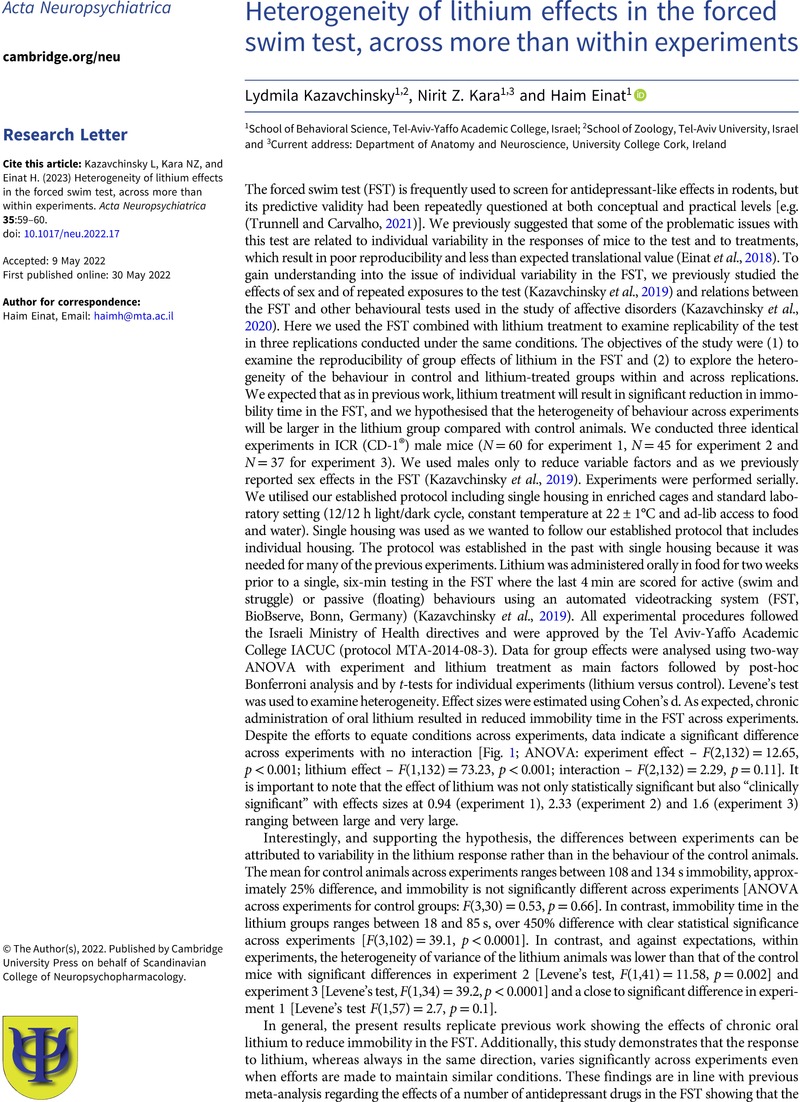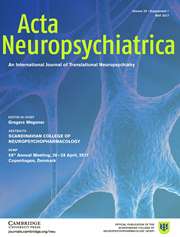No CrossRef data available.
Article contents
Heterogeneity of lithium effects in the forced swim test, across more than within experiments
Published online by Cambridge University Press: 30 May 2022
Abstract
An abstract is not available for this content so a preview has been provided. Please use the Get access link above for information on how to access this content.

- Type
- Research Letter
- Information
- Copyright
- © The Author(s), 2022. Published by Cambridge University Press on behalf of Scandinavian College of Neuropsychopharmacology
References
Einat, H, Ezer, I, Kara, NZ and Belzung, C (2018) Individual responses of rodents in modelling of affective disorders and in their treatment: prospective review. Acta Neuropsychiatrica 18(6), 1–6.Google Scholar
Kara, NZ, Stukalin, Y and Einat, H (2018) Revisiting the validity of the mouse forced swim test: systematic review and meta-analysis of the effects of prototypic antidepressants. Neuroscience & Biobehavioral Reviews 84, 1–11. doi: 10.1016/J.Neubiorev.2017.11.003.CrossRefGoogle ScholarPubMed
Kazavchinsky, L, Dafna, A and Einat, H (2019) Individual variability in female and male mice in a test-retest protocol of the forced swim test. Journal of Pharmacological and Toxicological Methods 95(2), 12–15. doi: 10.1016/J.Vascn.2018.11.007.CrossRefGoogle Scholar
Kazavchinsky, L, Dahan, S and Einat, H (2020) Exploring test batteries for depression- and anxiety-like behaviors in female and male ICR and black Swiss mice. Acta Neuropsychiatrica 7, 1–32.Google Scholar
Trunnell, ER and Carvalho, C (2021) The forced swim test has poor accuracy for identifying novel antidepressants. Drug Discovery Today 26(12), 2898–2904. doi: 10.1016/J.Drudis.2021.08.003.CrossRefGoogle ScholarPubMed



